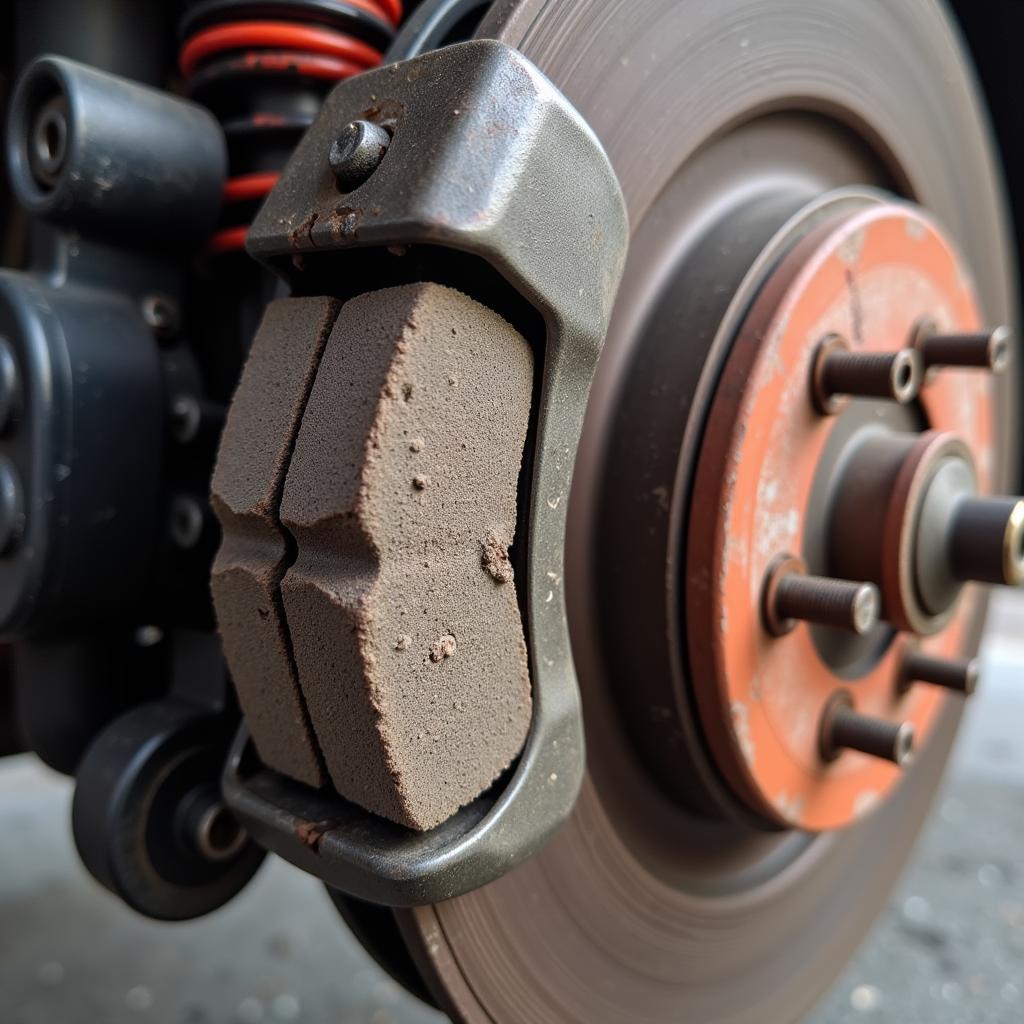The appearance of a car dashboard brake warning light symbol can be an unnerving experience for any driver. This bright, attention-grabbing symbol, often a red circle with an exclamation mark or the word “BRAKE” inside, signals that something may be wrong with your vehicle’s braking system. Ignoring this warning light could have serious consequences, compromising your ability to stop safely and potentially leading to an accident.
Understanding Your Car’s Brake Warning System
Your car’s braking system is complex, composed of various components working together to ensure effective stopping power. The brake warning light is an essential part of this system, alerting you to potential issues before they escalate.
Common Reasons for the Brake Warning Light
While a mechanic’s diagnosis is always recommended, understanding the common reasons behind a glowing brake warning light can help you assess the urgency of the situation:
- Low Brake Fluid Level: This is the most common cause. Brake fluid is the lifeblood of your car’s hydraulic braking system. A leak in this system can lead to a drop in fluid level, triggering the warning light.
- Engaged Parking Brake: It might seem obvious, but sometimes the simplest explanation is the right one. If your parking brake is even slightly engaged, the warning light might stay on.
- Worn Brake Pads: Brake pads are designed to wear down over time. When they reach a certain level of wear, a sensor triggers the brake warning light, signaling the need for replacement.
- ABS Issue: Modern cars come equipped with Anti-lock Braking Systems (ABS). A malfunction in this system, often indicated by an additional ABS warning light, can also trigger the brake warning light.
- Brake Master Cylinder Problems: The master cylinder is the heart of the hydraulic braking system. Any issues with this component can severely affect braking performance and trigger the warning light.
What to Do When the Brake Light Turns On
Seeing the brake warning light on your dashboard can be stressful, but it’s crucial to stay calm and take appropriate action:
- Safely Pull Over: Find a safe spot to pull over as soon as possible. Continuing to drive with a potential brake issue can be dangerous.
- Check Your Parking Brake: Ensure your parking brake is fully disengaged. If it’s not, release it and see if the warning light turns off.
- Inspect Brake Fluid Level: If you’re comfortable doing so, carefully check your brake fluid level. Refer to your car’s owner manual for the location of the reservoir and instructions. Caution: Brake fluid is corrosive. Avoid contact with skin or your car’s paint.
- Avoid Driving Further: If the warning light persists, it’s strongly advised not to drive any further. Contact a qualified mechanic or towing service to have your vehicle inspected and repaired.
The Importance of Timely Brake System Inspection
Regular maintenance is crucial for a safe and reliable driving experience. Here’s why you shouldn’t delay a brake system inspection:
- Safety First: A well-maintained brake system is paramount for your safety and the safety of others on the road.
- Preventing Costly Repairs: Addressing brake issues early can prevent further damage to the system, saving you from potentially expensive repairs down the line.
- Extending the Lifespan of Your Brakes: Regular inspections and timely replacements of worn components can significantly extend the lifespan of your brakes.
Don’t Ignore the Warning
A glowing seat leon dashboard warning light, especially the brake warning light symbol, is your car’s way of telling you something is wrong. Ignoring this warning puts you and others at risk. Remember, a little caution today can prevent a major problem tomorrow. If your car’s brake warning light illuminates, pull over safely, assess the situation, and if in doubt, always consult a qualified mechanic.
FAQs About Brake Warning Lights:
1. Can I drive a short distance with the brake warning light on?
It’s not recommended. Driving with a potential brake problem puts you at risk.
2. How often should I check my brake fluid?
It’s a good practice to check your brake fluid level at least once a month and before any long journeys.
3. How long can I drive on worn brake pads?
Driving on worn brake pads is dangerous and can damage your rotors. If your brake warning light indicates worn pads, have them replaced immediately.
4. Is it safe to add brake fluid myself?
If you’re comfortable doing so and understand the safety precautions, you can add brake fluid yourself. However, if you’re unsure, it’s always best to consult a professional.
5. What does it mean if the brake warning light flashes?
A flashing brake warning light could indicate a more serious problem with the ABS system. It’s crucial to have your vehicle inspected by a mechanic immediately.
Remember, your car’s brake system is critical for your safety. Don’t ignore the warning signs – take action to ensure you can stop safely every time.

